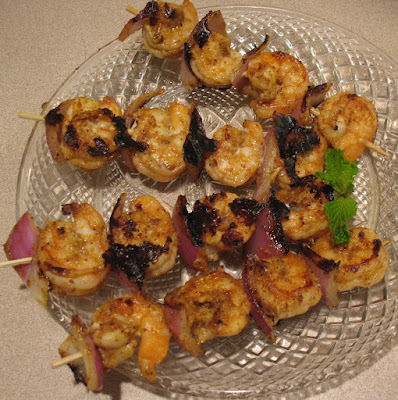MANGA RASAM
Once again it is mango season. It is time to include mangoes in almost all the dishes prepared for a full meal. Pickles, curries, salads, dals, sambar, morkuzhambu and chutneys, mango rice, sweets like halwa and payasam prepared out of ripe mangoes - the list of mango based dishes is endless. At least one mango dish a day, is the order of the day, as long as the season lasts!
Here is a recipe for Rasam which is an integral part of a South Indian meal - prepared with raw mango.

INGREDIENTS
Raw mango chopped - 1 cup
Tur dal - 1 cup
Turmeric powder - 1 pinch
Powdered jaggery - 1/4 tsp
Salt - 1 1/2 tsps
INGREDIENTS FOR RASAM POWDER
Coriander seeds - 1 tbsp
Red chillies - 5
Black pepper - 1/2 tsp
Cumin seeds- 1/2 tsp
Fenugreek seeds - 1/4 tsp
Asafoetida - one small piece
Curry leaves - a few
FOR SEASONING
Ghee - 2 tsps
Mustard seeds - 1/4 tsp
FOR GARNISHING
Fresh coriander leaves ( chopped ) - 1 tbsp
METHOD
1. Wash and chop mango with peel and pressure cook with dal and turmeric powder adding 3 cups of water.
2. Heat one drop of ghee in a pan and fry asafoetida.
3. Add coriander seeds , pepper, cumin seeds, fenugreek seeds and red chillies and roast together till it emanates a very pleasant aroma.
( If asafoetida powder is used, add it just before the curry leaves ).
4. Lower the flame and add curry leaves and roast till they become dry.
5. Allow to cool and powder the roasted ingredients and keep aside.
6. Mash the cooked dal and mango retaining a few mango pieces as they are.
7. Add salt and jaggery and boil till they blend with the cooked dal mango mixture.
8. Add rasam powder and wait till it starts boiling.
9. Immediately add 500ml of water in a slow stream, holding the water jug high up , so that the rasam is topped with foam.
10. Lower the flame and add coriander leaves.
11. Cover with a lid and allow the rasam to gather more foam on top.
12. Switch off flame when the raam is just about to boil. Over boiling will kill the pleasant aroma of rasam.

13. Heat ghee in a seasoning ladle and add mustard seeds.
14. When the mustard seeds splutter add the seasoning to the rasam.

Enjoy the flavoursome Manga Rasam with hot rice topped with a spoon of pure ghee or relish the tangy rasam sip by sip from a tall glass topped with a dash of ghee.
Once again it is mango season. It is time to include mangoes in almost all the dishes prepared for a full meal. Pickles, curries, salads, dals, sambar, morkuzhambu and chutneys, mango rice, sweets like halwa and payasam prepared out of ripe mangoes - the list of mango based dishes is endless. At least one mango dish a day, is the order of the day, as long as the season lasts!
Here is a recipe for Rasam which is an integral part of a South Indian meal - prepared with raw mango.

INGREDIENTS
Raw mango chopped - 1 cup
Tur dal - 1 cup
Turmeric powder - 1 pinch
Powdered jaggery - 1/4 tsp
Salt - 1 1/2 tsps
INGREDIENTS FOR RASAM POWDER
Coriander seeds - 1 tbsp
Red chillies - 5
Black pepper - 1/2 tsp
Cumin seeds- 1/2 tsp
Fenugreek seeds - 1/4 tsp
Asafoetida - one small piece
Curry leaves - a few
FOR SEASONING
Ghee - 2 tsps
Mustard seeds - 1/4 tsp
FOR GARNISHING
Fresh coriander leaves ( chopped ) - 1 tbsp
METHOD
1. Wash and chop mango with peel and pressure cook with dal and turmeric powder adding 3 cups of water.
2. Heat one drop of ghee in a pan and fry asafoetida.
3. Add coriander seeds , pepper, cumin seeds, fenugreek seeds and red chillies and roast together till it emanates a very pleasant aroma.
( If asafoetida powder is used, add it just before the curry leaves ).
4. Lower the flame and add curry leaves and roast till they become dry.
5. Allow to cool and powder the roasted ingredients and keep aside.
6. Mash the cooked dal and mango retaining a few mango pieces as they are.
7. Add salt and jaggery and boil till they blend with the cooked dal mango mixture.
8. Add rasam powder and wait till it starts boiling.
9. Immediately add 500ml of water in a slow stream, holding the water jug high up , so that the rasam is topped with foam.
10. Lower the flame and add coriander leaves.
11. Cover with a lid and allow the rasam to gather more foam on top.
12. Switch off flame when the raam is just about to boil. Over boiling will kill the pleasant aroma of rasam.

13. Heat ghee in a seasoning ladle and add mustard seeds.
14. When the mustard seeds splutter add the seasoning to the rasam.

Enjoy the flavoursome Manga Rasam with hot rice topped with a spoon of pure ghee or relish the tangy rasam sip by sip from a tall glass topped with a dash of ghee.












